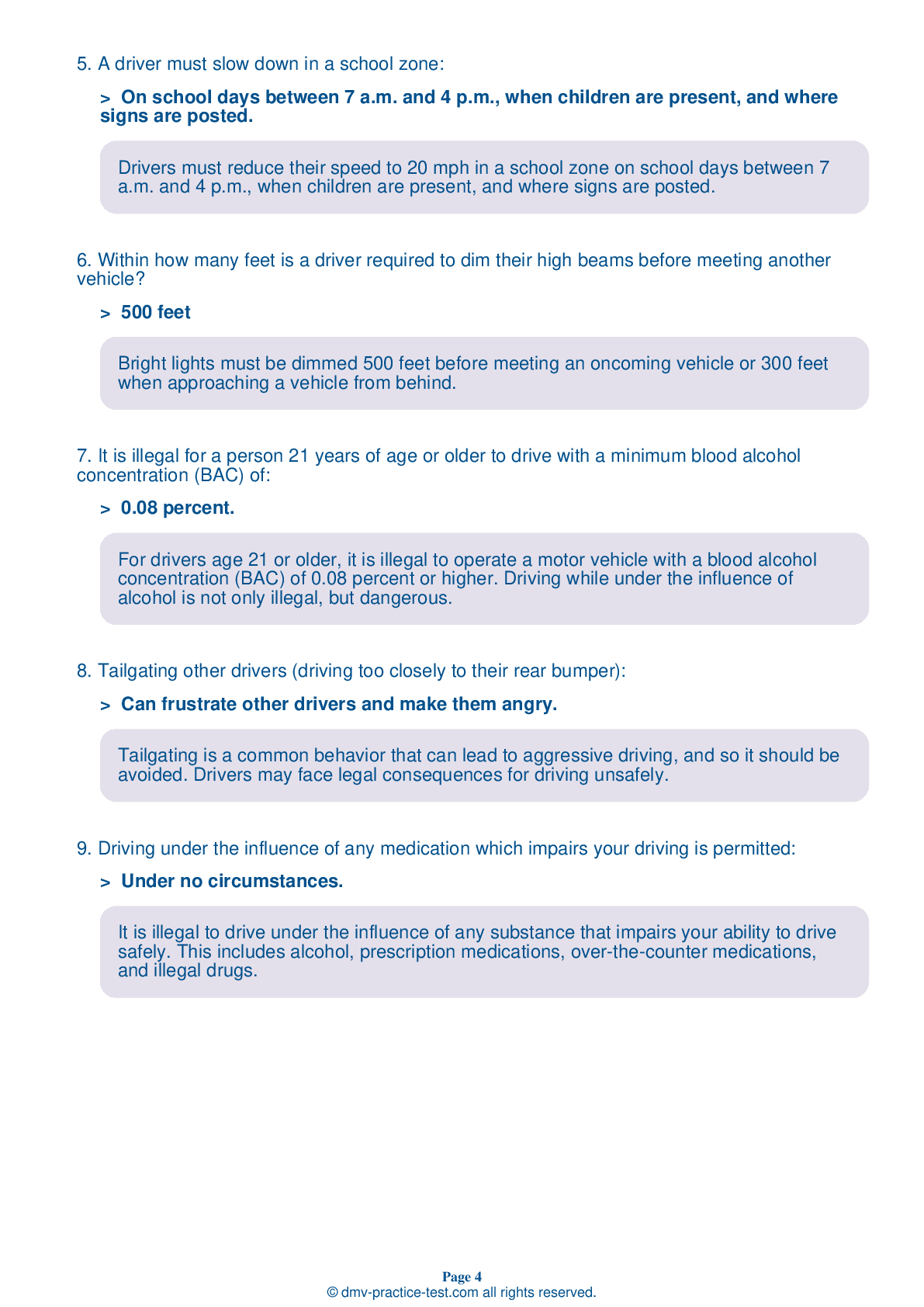FREE Illinois DMV Practice Test #6 Page 3 of 3
For January 2026, this set of Illinois DMV practise tests has been updated. It includes questions based on the most important traffic signs and rules for 2026 from the Illinois Driver Handbook. To study for the DMV driving permit test and driver's licence exam, use actual questions that are very similar (often identical!) to the DMV driving permit test and driver's licence exam.
Each question on the practise exam has a tip and explanation to help you recall the ideas. Questions about traffic rules, traffic signs, and driving statutes, as well as information from the Driver Handbook, will be included in the written portion of the official DMV test.
You must properly answer 38 of the 35 questions to receive a passing mark. To help you prepare for your Illinois instruction permit or driver's licence, take our DMV practise test.
The DMV exam is offered in a variety of languages.
Using any form of testing help will result in an automatic fail, and the DMV may take further action against your driver's licence, so avoid it.
25 . Before a driver can regain driving privileges after losing them for failure to pay damages caused by a crash, the driver must file proof of financial responsibility with the Secretary of State’s office.
Drivers without liability insurance who are at fault in a crash that results in injury, death, or property damage must provide a guarantee of payment to the Secretary of State's office. Failure to post this security may result in suspension of their license.
26 . When passing a row of parked vehicles, you should:
Keep a space between your vehicle and parked vehicles. A person may step out of a parked vehicle or out from between the parked vehicles without looking. A driver may begin moving their vehicle before realizing you are there.
27 . You enter a designated turn lane to make a left turn at an upcoming intersection. There is oncoming traffic. You should:
When making a left turn, you should always begin signaling about 100 feet before the turn. You should keep your front wheels aiming straight ahead until it is safe to start your turn. This ensures that you will not be pushed into oncoming traffic if another vehicle hits you from behind.
28 . This road sign means:

Warning signs provide notice to road users of a situation that might not be readily apparent and are usually yellow with black markings. This sign warns drivers of an upcoming steep hill. Drivers should adjust their speed accordingly to avoid collisions and brake damage.
29 . To avoid hydroplaning while driving in rainy conditions, you should:
When driving too quickly in wet conditions, your tires may lose all contact with the road surface. Loss of traction will cause the vehicle to ride on top of the water, which is called "hydroplaning." The best way to prevent this from happening is to drive more slowly in rainy or wet conditions than you would when driving during ideal weather conditions.
30 . This sign is a:

A downward-facing triangular sign is always a yield sign. Drivers must be prepared to slow down or stop when approaching a yield sign.
31 . This road sign means:

Regulatory signs provide notice to road users of traffic laws that must be obeyed. This sign tells drivers that it is prohibited to make a U-turn.
32 . This road sign means:




